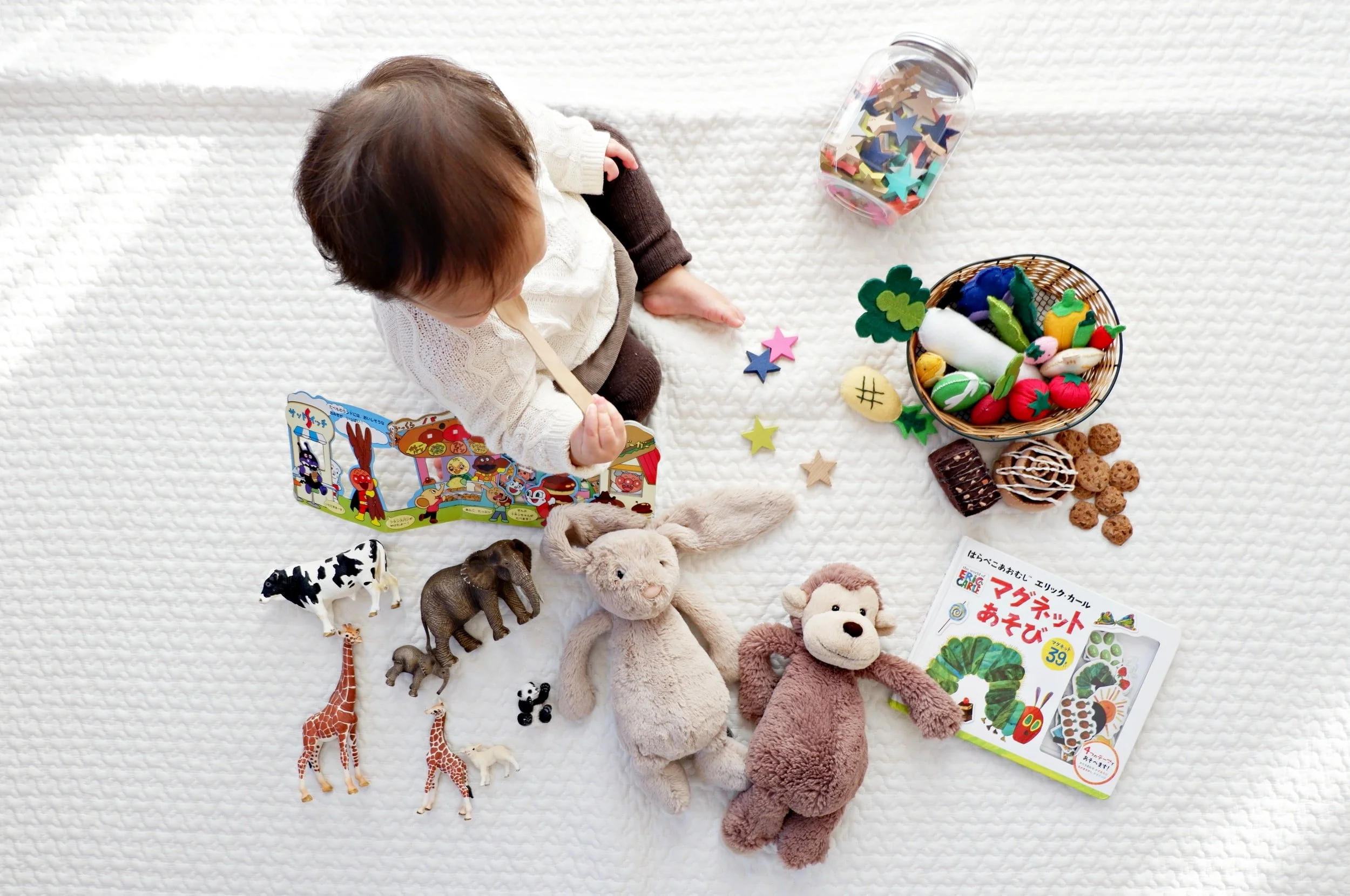By Heather Hess, Licensed Professional Counselor
Parents and caregivers are often curious about what is going on in the playroom. This article will help shed some light on the amazing power of play therapy!
Play therapists are trained to not only assess the needs of the children we see, but to also observe their behavior, teach new skills, and support them as they communicate their worlds to us in the most comfortable way for them, which is play.
Children express their feelings and thoughts through the language of play by using toys, games, art, sand tray, and other developmentally appropriate means as their words. They use play to address any social or emotional concerns they have. During play therapy, children learn how to understand and identify their feelings as well as express those feelings in a safe environment. Play therapy also helps children to improve their communication and social skills, develop self-regulation skills, and build problem-solving skills.
Play therapy has multiple stages. The following breakdown of these stages will help you to support your child in their play therapy journey.
The Stages of Play Therapy
Stage 1: Introduction or Exploration Phase
As the title suggests, in the first stage of play therapy the child becomes comfortable in the playroom, exploring their options. This phase encompasses the first four to six sessions. During this time, the therapist’s goal is to build a trusting relationship with the child, nurturing an environment of safety for the child to express themselves freely. During this time, the child will learn what to expect in each session, develop a bond with their therapist, and become comfortable with the toys and techniques that will be utilized.
During this phase, children will not only explore the playroom but will also be questioning what they can and cannot do in the playroom. Some children want to try everything they see and touch everything while other children may be more hesitant and uncertain. Whether the child is ready to jump in or looks to the therapist to take the lead, this phase is where the child will understand boundaries and expectations.
The therapist will use empathic response, support, and encouragement for the child to make decisions and take responsibility. This will empower the child to take the lead as well as taking risks and initiating play. During this time, the child will experience the permissiveness of the playroom where the only limits set are to ensure safety: this means that both the child and therapist are safe from injury and property is not damaged.
Each child becomes comfortable in their own time. Some children are comfortable right from the start while other children need a little more time to warm up. Parents and caregivers can help their child with the process by being patient and respecting the child’s pacing. It can feel very overwhelming to a child to be left alone in a strange place with a new person; parents or caregivers may be invited into the session initially to help with this transition and help establish safety. Parents and caregivers can also pay attention to their child’s nonverbal communication, validating their feelings while also encouraging the child to participate in the session.
During this phase, parents and caregivers often experience relief, knowing that their child is receiving help. Children are excited to attend their weekly sessions during this phase and parents and caregivers notice an improvement in behavior and mood. Once the child is comfortable expressing themselves and has developed the trust and security necessary for therapeutic work, they progress to the next stage of play therapy.
Stage 2: Resistance or Negative Reaction Phase
The name of this stage sounds worse than it really is; the main takeaway for this stage is that children are dealing with something many adults also struggle with – change.
With a strong foundation from which to work, the therapist and child are working on the issues that brought them to therapy. Focus is now on treatment; the dynamic in the playroom is shifting from introduction to working. Children are confronted with their maladaptive habits at this stage. They either decide to work on building new habits or fight against change because it feels too difficult. It is at this point that parents and caregivers may find their child resistant to attending their therapy sessions. Parents can validate their child’s concerns while also sharing their confidence in the therapy process and encouraging them that they CAN do hard things (you will find that this is a phrase used often in the playroom!).
The highlights of this stage for your child are emotional self-expression and being better able to communicate their physical feelings as well. During this stage, your child may also have more emotional outbursts, attempt to have more control, and regress behaviorally. These are signs of developing emotional intelligence, self-control, confidence, and learning to adapt in different ways with others.
It is during this phase that parents and caregivers can be supportive of their child by recognizing and verbalizing that change is difficult but worth it. Just as adults become anxious with change or become overwhelmed when frustrated, children also sometimes need more patience and understanding as they navigate new situations.
This stage may last a few sessions or a few months, as each child responds to this process differently. Keeping in communication with your child’s therapist during this time will be helpful to understand how to you can support your child during this phase.
Stage 3: Growing or Work Phase
During this phase (which is typically the longest), the child comes to sessions ready to put in the work required for personal growth. They are healing, learning, and making changes. Parents and caregivers during this phase notice positive growth in self-esteem, communication, behaviors, and overall attitude. Children during this phase are using their newly learned coping skills without much prompting from parents and are demonstrating self-regulation, flexibility, and resilience.
It is important for parents and caregivers to remember during this phase that with growth occasional setbacks or regression are common. This can be frustrating or confusing to parents and caregivers. Children are learning new behavioral patterns as new neural pathways are created in their brains, but it is normal for old habits to resurface as well. Parents and caregivers can help support the child by practicing empathy and remaining consistent with expectations. Reminding the child of their new skills and that they are fully capable can also help. We all make mistakes sometimes and could use a little grace to get back on track!
Stage 3: Termination
This final stage occurs when the child is consistently implementing their new skills without difficulty. The child’s behavioral and emotional issues have stabilized or been resolved in multiple environments as well.
Termination is a process that begins with decreasing play therapy sessions from weekly to every other week, then to once a month. Once the child shows that they can maintain their progress with less support, they will graduate from therapy.
Although termination is a positive accomplishment, it can be difficult for the child. They have developed a secure relationship with their therapist and seeing them less may seem like a punishment for making positive changes. The child may need extra reassurance and support during this time from parents and caregivers.
The child now has the skills to cope with a variety of situations. Their therapist will use the last sessions to ensure a healthy and happy closure. The child will reflect on their play therapy journey and develop further confidence in all that they have learned and accomplished, especially the strength that they found inside themselves. This is a time to celebrate!
Parents and caregivers can expect some minor regressions after termination, but overall, the child will adapt to the change. Parents and caregivers can feel free to reach out to their child’s therapist if any new or ongoing concerns arise after termination to discuss the best way to support the child.
REFERENCES
Casado-Frankel, T. (2016, January 18). Child’s Play: How Play Therapy Works. Psychology Today. https://www.psychologytoday.com/us/blog/contemporary-psychoanalysis-in-action/201601/child-s-play-how-play-therapy-works
Hicks, B. (2017, February 9). Phases of Treatment in Play Therapy. https://www.brennahicks.com/2017/02/phases-treatment-play-therapy/
Landreth, G. L. (2012). Play Therapy: The Art of the Relationship (Third ed.). New York: Routledge, pp. 19-22.
Post, P. (2014). Involving Parents in Child-Center Play Therapy. Counseling Today, 1–6. https://ct.counseling.org/2014/08/involving-parents-in-child-centered-play-therapy/







